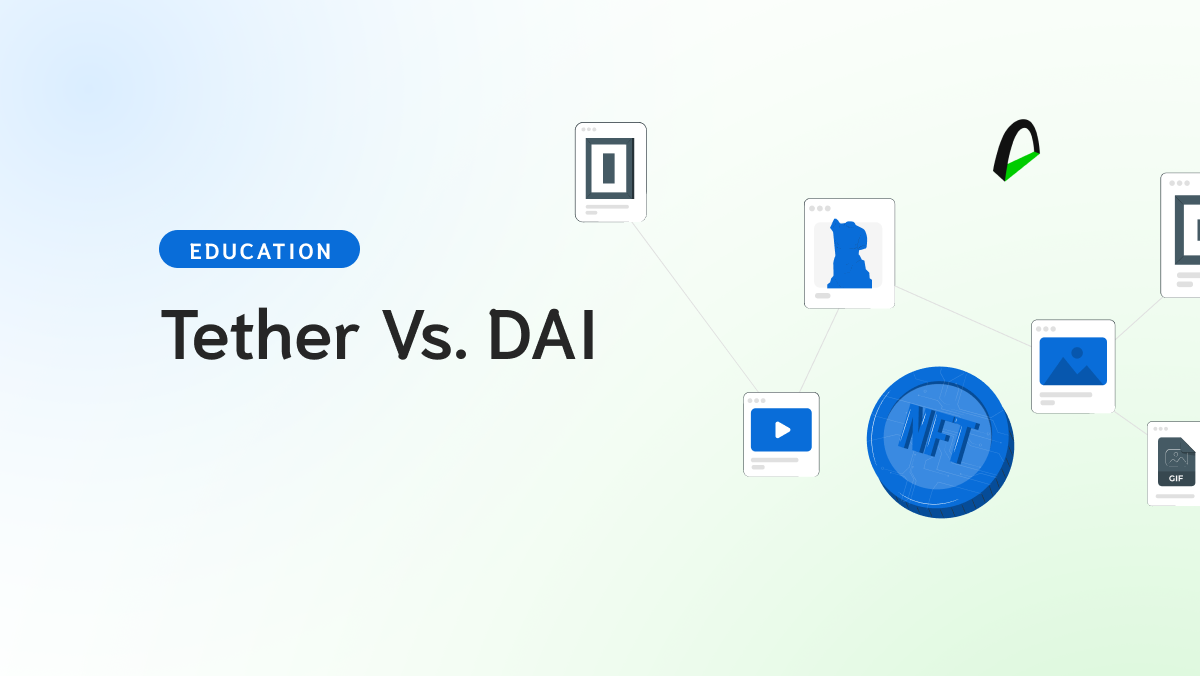For stock options traders, the wheel strategy is a great way to buy low and sell high. Now crypto traders can join in on this income-generating plan, too - with minor tweaks.
By selling cash-secured puts and covered calls at discounted prices, they could reap the rewards of profits more significant than market value.
How the wheel strategy works
Step 1
This investor is leveraging their capital by continually selling OTM cash-secured puts to capture option premium income.
When options expire, the holder of a put can keep all the premium if ITM is not reached at maturity. However, this process will be repeated until success or expiration occurs.
When an in-the-money put option expires, it is automatically exercised, allowing the owner to pocket a profit.
USDC crypto options offer an alternative to traditional equity options. They provide a cash-settled process, meaning no physical transfer of ownership occurs - instead, the account connected with the option is credited or debited directly in USDC.
Step 2
Investors can utilize the power of their crypto assets by selling out-of-the-money calls to create a sustainable income source.
When the expiry date of a call option arrives, and it is in the money, investors must decide between two possibilities: offloading the underlying asset for cash or continuing to generate income by selling covered calls. It all comes down to their desired outcome - short-term profits or long-term returns.
Setting up the wheel strategy
You must ensure your trading account has sufficient funds to guarantee success with the wheel strategy.
This balance must provide enough coverage for any potential gaps between a strike price and settlement price if an option finds itself in the money at expiry.
Selling put options can yield a premium, but due to the potential downside of being required to buy shares at an unfavorable price, it's considered a high-risk strategy.
It is essential for those considering this approach to understanding that the difference between strike and settlement prices (minus any premiums collected) could have them paying more than anticipated.
For optimal results, select a strike price you are comfortable investing in for the long haul.
When deciding which put option to sell, savvy investors need to consider the strike price and Days-To-Expiration (DTE) for achieving their desired outcome - whether that be overlapping or expiring worthless.
Striking a balance between these factors requires careful analysis of current market conditions.
When collecting premiums on options, selling one with a strike price much lower than the current market value helps ensure that your choice won't expire in the money; however, this typically means you'll receive less premium since further out of the money strikes cost less.
If you're trying to get your hands on the underlying crypto asset, select an appropriate strike price that would put you in a winning spot – not too high or low, as that could limit profits.
When determining the proper maturity to trade, it's essential to factor in Theta to indicate how much value will be lost over time.
Time decay is inevitable and occurs at different rates for each option; understanding these changes can help you maximize your profits when selling options.
Options traders keep a close eye on Theta, the Greek letter that measures how quickly an option's value erodes as it nears its expiration date. As time passes, the value of options declines — ultimately hitting zero at their expiry.
Theta can be considered a snowball on a mountain - starting small and slowly at the peak but rapidly picking up speed while growing larger until it reaches its destination.
An option's Theta, commonly represented as unfavorable due to its typically adverse effect on an option's price, can drastically influence how much value it will lose each day. For example, a -0.50 theta could mean losing 50 cents daily, while a -2.00 figure suggests losses of $2 per day.
Options with longer expiration dates tend to experience less price decay than shorter ones, making them brilliant investments.
Options with a strike price equal to the current underlying asset value experience peak Theta, but values gradually lower as you move further into or out of the money.
To get the most from your options strategy, consider selling near-dated puts within 30 to 40 days until expiration. This allows you to use time decay while providing some flexibility compared to a longer contract commitment.
How to pick which call to sell
You must keep the underlying crypto asset 'in reserve' to keep your short-call contract intact. This serves as collateral to guarantee that both sides of the transaction are fulfilled.
When deciding which strike price to sell a put, consider the same factors you would use when selecting an option.
How far out-of-the-money should it be, and how much time until expiry? These two points will help determine if your desired outcome - whether having the right expire or being exercised - is met.
Selling near-dated call options with 30 to 40 days until expiration (DTE) provides a balanced blend of rewards and flexibility.
Deep diving into the wheel strategy
When considering the wheel options strategy, Delta is a valuable measure to assess the ideal strike prices.
When trading options, it is essential to understand the concept of Delta. The deltas for call and put options are determined by their underlying assets - a positive value between 0 and 1 for calls and negative values ranging from -1 through 0 with puts. Knowing this will help you make informed decisions when investing in these securities.
Call and put options provide an insight into the directional movement of the underlying asset, with calls increasing in value when it increases by $1.00. In contrast, puts increase due to decreased purchase values falling at that same rate.
The Delta of an at-the-money call option is usually close to 0.50, so a change in the underlying stock price will result in an approximate $0.50 shift in premium value per dollar move.
Delta measures the correlation between price movement and an option's value. As calls become further from market prices, Delta decreases; however, their deltas increase when these same options drop in cost.
Put options experience the opposite effect: as they move away from current values, Delta rises while becoming cheaper reduces it.
Delta gives traders an indication of the probability that a strike price will end up in the money. It's like taking a bet on what the markets are telling us.
When choosing an option, the odds of expiring in the money vary drastically. An at-the-money option gives you a 50/50 chance, whereas a 0.20/-0.20 delta has only one-fifth probability - making it a riskier bet overall.
What could traders benefit from the wheel strategy?
Investors who want to take their options trading to the next level should consider a wheel strategy. This approach can yield impressive results but requires an in-depth understanding of options trading.
Crypto options can be a fantastic trading tool for experienced traders. Still, one must remember that cash-settled transactions always require the acquisition and potential sale of underlying assets when short puts or calls expire.
The wheel option strategy is best reserved for those who understand these nuances.
When to use the wheel strategy
In sideways markets, wheel strategies offer multiple advantages for investors. Round number support and resistance levels can boost the profitability of options trading: from passive income opportunities to lowering cost-basis or increasing sale prices on crypto assets.
The role of the breakeven point
With the wheel strategy, it is difficult to determine a single breakeven point as many parts are in motion. To accurately assess potential profitability and loss, each component must be individually examined for its unique breakeven analysis.
When selling a cash-secured put, you'll need the option to expire below its strike price for your investment to remain break even and show returns equal to what was initially paid in premium.
When investing using the wheel strategy, it's essential to consider call not only prices but also the cost of obtaining any relevant underlying assets.
When trading a put option, if the seller fails to buy back the underlying asset upon expiration, they could face severe consequences.
Three immediate repercussions are loss of potential profits, increased risk exposure on open positions, and additional transaction costs.
Covered calls
Knowing when a covered call can break even is critical to making money in options trading. To find this point, you must consider the premium from an option and any potential losses that could occur if its underlying asset drops before expiration.
A savvy investor can acquire one BTC for $20,000 and minimize their losses by selling an out-of-the-money call option.
The premium collected offsets any potential decrease in the underlying asset price. In this case, a return of capital is enabled if bitcoin falls to $18,000 or lower.
The sweet spot of the wheel strategy
An options strategy can be likened to a wheel, spinning around and offering several points at which it could land - some yield no rewards, others with outstanding returns.
The optimal spot on this wheel is the sweet spot; when landed upon an expiration date, traders are guaranteed an excellent price they wouldn't find anywhere else.
Cash secured put
The cash-secured put option is a desirable settlement when the underlying asset price matches the strike rate at expiration. This results in no losses for sellers, as they get to keep their premiums collected from initiating the trade.
Covered call
Selling a short covered call is an attractive option for optimizing their return. With the sweet spot being when the option expires at the money, holders of this strategy reap profits from collecting premiums and – in most cases - observing price increases on the underlying asset.
Adjustments of the wheel strategy during bear markets
Options traders have a wide range of choices to adjust their position, even when the markets are unpredictable. This flexibility is a significant benefit that sets option trading apart from spot and perpetual futures strategies.
An investor may choose to roll the dice and go for a BTC $20,000 put option with 40 days till expiration. If their market prognosis proves true, they will be rewarded handsomely: receiving a premium of $2,000 when Bitcoin is trading at around $22,000 currently.
The investor is increasingly pessimistic as the contract draws nearer to its expiration date. They believe BTC may drop all the way from its current price down to $18,000 in a matter of just 20 days.
The stock's value dropped significantly, but the option premium remained unchanged. This indicates that time decay could offset any loss in the underlying price.
Here are some ways they can adjust the position to reflect their new, more bearish outlook:
- If the investor closes their position and BTC prices dip, they can try again with a lower strike price--allowing them to reduce costs while still earning equal premiums.
- Protect your short put investment with a Bull Put Spread. By purchasing an out-of-the-money put option at a lower strike price, you will offset any potential losses that may occur due to the expiry of the in-the-money long position. This strategy provides security and peace of mind knowing that no matter where prices go, there is always protection against loss up to the maximum premium collected on the written short option.
- Rolling Down and Rolling Up are strategies used to adjust option positions while protecting against losses. In a Roll Down, one closed short strike is replaced by an out-of-the-money, a more direct strike that offers lower Delta but less premium or Theta than the original position. The opposite is valid for a Roll-Up strategy—a higher in-the-money longer will be opened with more risks of expiring in-the-money balanced with greater potential rewards from higher premiums collected from its sale.
Returns using the wheel strategy
Trading the wheel strategy can be profitable if you understand and keep three critical factors in mind.
The total amount of premium collected will impact outcomes, as well as being able to predict trend reversal points by "buying low and selling high."
Finally, timing implied volatility levels is essential when attempting to maximize profits from this trading strategy. With these considerations kept foremost in your approach, success could await.
Tips for using the wheel strategy
Making the most of your wheel strategy is simple yet incredibly effective! Take aim at prices that are more likely to remain on target, lock in when volatility and time work together for maximum benefit, then receive alerts so you don't miss a single moment - all it takes to get results by putting this powerful tool into action.
Wheel strategy vs. covered calls
Investors already possessing a crypto asset can bypass the initial step of writing cash-secured puts and jump straight to selling covered calls.
Should their call option be exercised, they may opt to sell off the underlying asset in order to implement the wheel strategy from its first stage.
Wheel strategy vs. buy and hold
While direct investment can be advantageous in some cases, the options wheel presents investors with an alternate route to higher returns.
Though, of course, sometimes it pays off to HODL onto their assets for better success over time.
When writing options, particularly with expiration dates far in the future, the writer can accumulate a substantial amount of option premium that could be used to finance their purchase.
This presents an advantageous cost basis and boosts potential profits, yet it also means preceding any opportunities within this window period.
Selling put options might seem lucrative, but purchasing it directly is wise if you feel the underlying asset could gain more than what's offered in a premium.
Although this limits your initial gains to just the top-up money received from selling puts, it could prove much more fruitful overall due to potential future price rises.
When the market is stagnant or declining, selling calls against your underlying crypto can offer a steady income stream and protection.
However, if you anticipate a big move up in the asset's price, it pays to hang onto those options - taking advantage of potential gains could be costly.
For those seeking to take their investment game up a notch, the options wheel strategy presents an opportunity for advanced players.
Experienced investors can enjoy its technicality, while less professional traders may find something more suitable that suits their level of understanding and risk appetite within the broad array of available option investments—from bullish bets on stocks climbing in price through neutral strategies designed to harness volatility without having to declare a directional bias.






